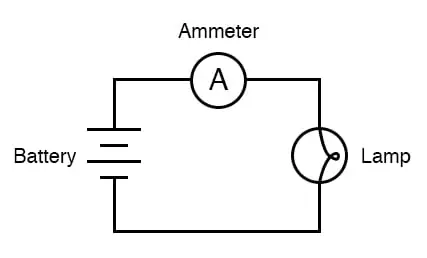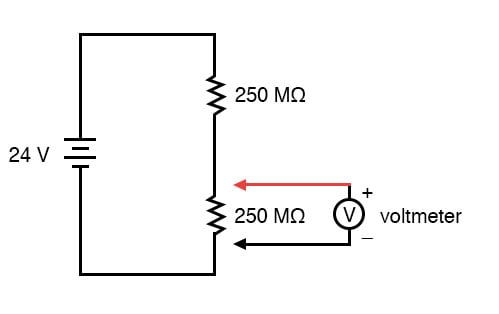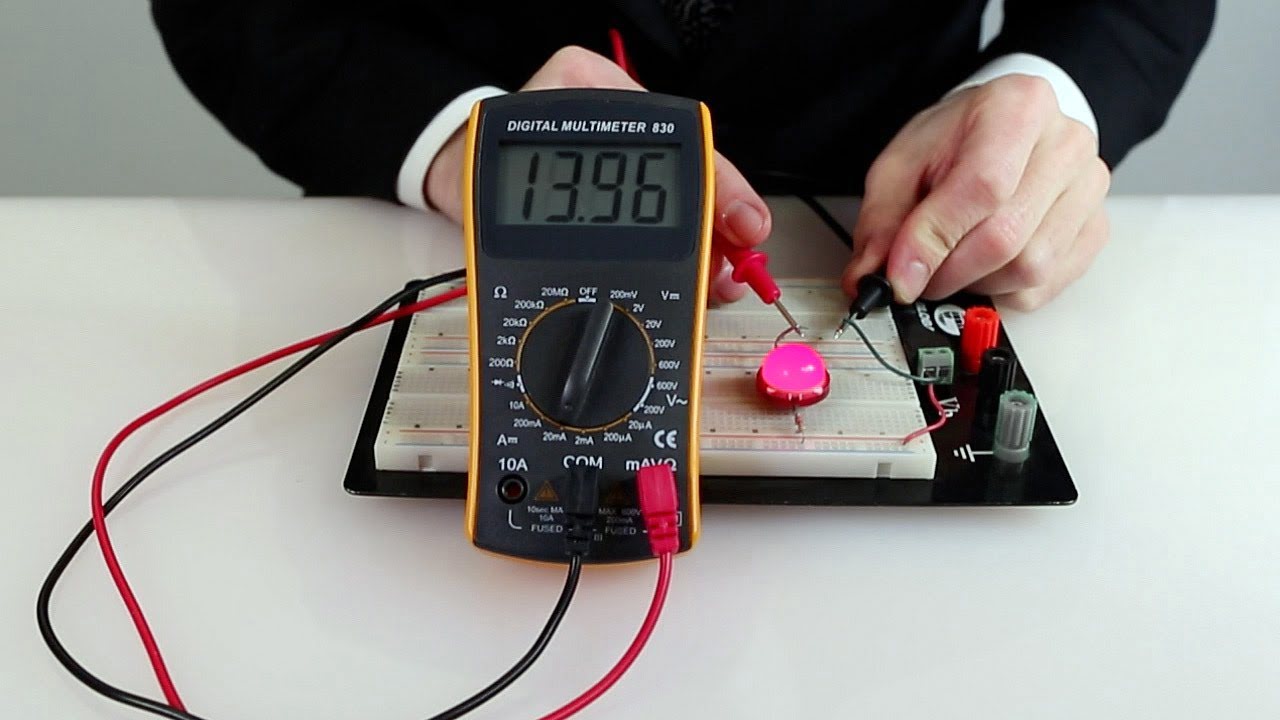As per the governing laws of electrical science, there are primarily two types of electrical instruments that we use to measure electricity. These are ammeter and voltmeter. So, what is the difference between an ammeter and a voltmeter?
The main difference between ammeter and voltmeter is that ammeter is an electrical instrument that we use to measure current in a given circuit. And, a voltmeter is an electrical instrument that we use to measure voltage across two points in a given circuit.
On the contrary, one of the biggest similarities between them is that the working principle of an ammeter and voltmeter are the same as of the Galvanometer.
No wonder, there are so many differences as well as similarities between them. But before going ahead, let me give you a brief review of the two in a tabular form. Let’s dive right in…!!!
Ammeter vs Voltmeter
| Ammeter | Voltmeter | |
| 1. | Ammeter is an electrical instrument that we use to measure current. | A voltmeter is an electrical instrument that we use to measure voltage. |
| 2. | It is connected in series with the circuit. | It is connected in parallel with the circuit. |
| 3. | Low resistance. | High resistance. |
| 4. | For an ideal ammeter, resistance should be zero. | For an ideal voltmeter, resistance should be infinite. |
| 5. | Changing the range of an ammeter is not possible. | Changing the range of a voltmeter is possible. |
| 6. | Ammeter has high accuracy. | The voltmeter has low accuracy. |
| 7. | An ammeter can measure current in ampere, microampere, milliampere. | A voltmeter can measure the voltage in volt, microvolt, millivolt. |
| 8. | Symbol of ammeter is (A). | Symbol of voltmeter is (V). |
What is Ammeter?

By definition, an ammeter is an electrical instrument that we use to measure current in an electrical circuit. It is named after the famed French physicist André-Marie Ampère who is often credited as one of the founding members of classical electromagnetism.
Well, technically speaking, the SI unit of measurement of electric current, Ampere, is named after him. And, the device we use to measure current is Ampere Meter, a short-form, Ammeter. To round off, the ammeter got its name from measuring unit Ampere, which got its name from French physicist André-Marie Ampère. Hence, the co-relation.
To measure current, an ammeter has to be connected in series with the given circuit. Otherwise, the whole current could not pass through the given circuit. Not to mention, it can not only measure current in amperes. It can also measure the flow of the current in micro or milliamperes.
In addition, for an ideal ammeter, the resistance should be zero which, in the real world, is not possible. In other words, it always has a small resistance which, by the way, does not obstruct the flow of the current.
Why changing the range of the ammeter is not possible?
Well, in order to increase or decrease the range of an ammeter, we have to increase or decrease the value of resistance. And, since for an ideal ammeter, the value of resistance should be equal to zero or nearer to zero. Hence changing the range of an ammeter is not possible.
What is Voltmeter?

By definition, a voltmeter is an electrical instrument that we use to measure emf, potential difference, or voltage across two points in an electrical circuit. It is named after the famed Italian physicist Alessandro Volta who is often credited as the inventor of the first electric battery.
Okay, okay, the S.I unit of measurement of voltage, Volt, is named after him. And, the device we use to measure voltage is Voltmeter. To round off, voltmeter got its name from measuring unit Volt, which got its name from Italian physicist Alessandro Volta. Hence, the co-relation.
To measure voltage, a voltmeter has to be connected in parallel with the given circuit. In addition, the resistance across the voltmeter is always high. WHY? Because when the resistance is high, no current will flow through the voltmeter. Hence the exact value of the potential difference across the two points can be measured.
Why changing the range of the Voltmeter is possible?
Well, in order to increase or decrease the range of a voltmeter, we have to increase or decrease the value of the resistance. And, for the ideal voltmeter, the value of the resistance can be maximum to infinity.
Meaning, we can fluctuate the resistance as per demand, of course, only towards the infinite side. Therefore, we can change its range by changing the value of the resistance across the voltmeter.
Frequently Asked Questions
1. What is the difference between Ammeter and Galvanometer?
Ans. The main difference between Ammeter and Galvanometer is that an Ammeter measures both alternating and direct current. Galvanometer, on the other hand, only measures direct current.
2. What is the difference between volt and ampere?
Ans. The primary difference between volt and ampere is that the volt is the SI unit of potential difference, voltage, or, electromotive force. And, the ampere is the SI unit of the electric current.
3. What is the difference between a series and parallel circuits?
Ans. The primary difference between series and parallel circuits is that the same amount of current flows through all the components of the series circuit. On the other hand, a different amount of current flows through all the components of the parallel circuit.
4. What is the difference between AC and DC Current?
Ans. The primary difference between AC and DC current is that an alternating current reverses its direction periodically, hence bidirectional. Direct current, on the other hand, does not reverse its direction, hence unidirectional.
That’s it for this post. If you like this article, share it if you like, like it if you share it. You can also find us on Mix, Twitter, Pinterest, and Facebook. Hey man, If you have come this far, do give us feedback in the comment section. It would make my day. You can also make a donation. Your donations will help us to run our website and serve you BETTER. Cheers!!!
